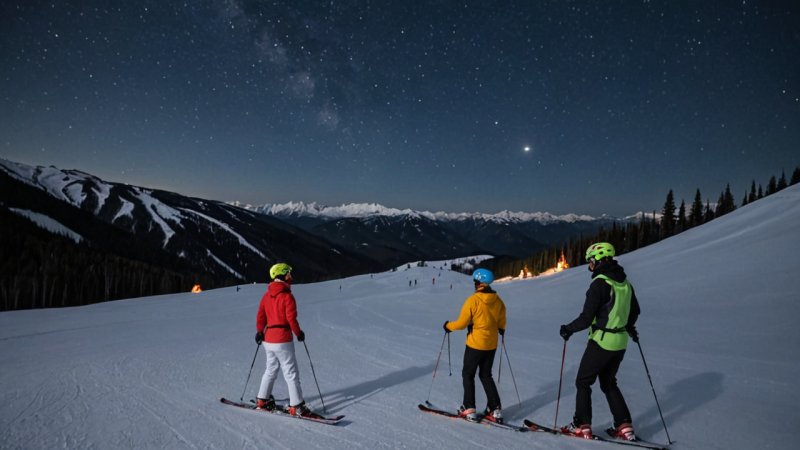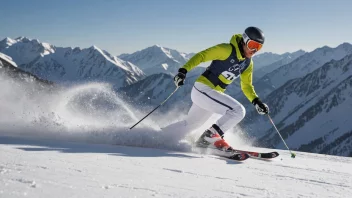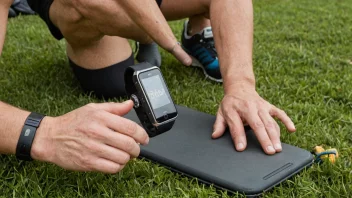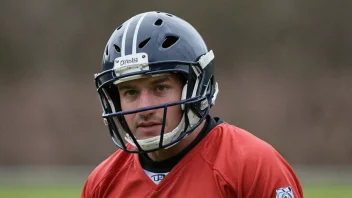As winter descends and the days grow shorter, many enthusiasts of skiing and snowboarding look to the slopes under the stars for an exhilarating experience. Night skiing and snowboarding offer a unique thrill, a blend of adventure and tranquility, illuminated by artificial lights that make the white snow glisten. However, enjoying these activities after sunset requires a heightened awareness of safety measures to prevent accidents and ensure an enjoyable outing. In this article, we will explore essential safety tips for night skiing and snowboarding, delve into the technology and equipment that can enhance safety, and provide performance tips to elevate your experience on the slopes.
Understanding the Unique Risks of Night Skiing and Snowboarding
Night skiing and snowboarding come with distinct challenges that differ from daytime activities. Reduced visibility can make it difficult to judge distances, identify obstacles, and perceive changes in terrain. The following are some of the unique risks associated with nighttime sports:
- Limited Visibility: Artificial lights can create shadows and distort perceptions of depth and distance. This can lead to misjudgments while maneuvering.
- Fatigue: Skiing or snowboarding later in the day may increase fatigue levels, affecting reaction times and decision-making.
- Temperature Drops: As night approaches, temperatures can plummet, increasing the risk of hypothermia or frostbite if proper gear is not worn.
- Less Traffic Control: With fewer skiers or snowboarders on the slopes, the risks associated with collisions can increase, especially on narrow trails.
Essential Safety Equipment for Night Skiing and Snowboarding
Investing in the right safety equipment is crucial for enjoying night skiing and snowboarding. Here are some must-have items:
1. Helmets
A helmet is non-negotiable for any snow sport, especially at night. Look for helmets that are specifically designed for winter sports, which offer good insulation and ventilation. Ensure that the helmet fits snugly but comfortably, and consider options with built-in lights or reflective elements for increased visibility.
2. Headlamps and Light Accessories
While ski resorts often provide lighting on the slopes, having your own headlamp or ski lights can improve visibility. Headlamps allow for hands-free illumination, enabling you to see your path clearly. Choose options with adjustable brightness settings and a wide beam angle.
3. High-Visibility Clothing
Wearing high-visibility gear is essential for night skiing. Bright colors, reflective strips, and LED-equipped jackets can enhance your visibility to other skiers and snowboarders. Layering is also important to keep warm and dry, so consider moisture-wicking base layers, insulating mid-layers, and waterproof outer layers.
4. Goggles and Visors
In addition to standard goggles, consider those with interchangeable lenses to adapt to changing light conditions. Anti-fog and UV protection features are beneficial, as they ensure clear vision and shield your eyes from harmful rays even at night.
Performance Tips for Night Skiing and Snowboarding
To enhance your skills on the slopes after dark, consider these performance tips:
1. Start Slow
If you are new to night skiing, begin with easy slopes until you acclimate to the reduced visibility and changes in terrain. Gradually progress to more challenging trails as you become comfortable.
2. Focus on Technique
Night skiing is not just about speed; it’s about control. Practice your turns and stopping techniques in a controlled manner. This will enhance your confidence and allow you to navigate unexpected obstacles more effectively.
3. Maintain a Safe Distance
Always maintain a safe distance from other skiers or snowboarders. Be aware of your surroundings and anticipate the movements of others, especially in poorly lit areas.
4. Stay Hydrated and Energized
Even in cold weather, it’s essential to stay hydrated. Carry a water bottle and consider consuming energy-boosting snacks to maintain stamina during your sessions.
Technological Advancements in Safety Gear
Recent advancements in sports technology have significantly improved safety for night skiing and snowboarding. Here are some notable innovations:
1. Smart Helmets
Smart helmets equipped with Bluetooth technology allow users to connect to their smartphones for navigation, calls, and music while skiing. Some models come with built-in lights and sensors that detect falls, sending alerts to emergency contacts.
2. GPS Tracking Devices
Wearable GPS devices can provide real-time location tracking. In case of an accident, the device can relay your coordinates to rescue teams, ensuring a quicker response time.
3. Avalanche Safety Equipment
If you’re venturing into backcountry skiing or snowboarding at night, carrying avalanche safety equipment such as beacons and probes is essential. These devices can save lives in case of an avalanche.
Tips for Choosing the Right Ski Resort for Night Activities
Not all ski resorts offer night skiing, and those that do may vary in quality and safety measures. Here are factors to consider when selecting a resort:
1. Lighting Quality
Evaluate the type of lighting used on the slopes. LED lights are generally brighter and provide better visibility than traditional lighting.
2. Trail Variety
Choose resorts that offer a range of trails suitable for different skill levels. This ensures a more enjoyable experience for everyone in your group.
3. Safety Measures in Place
Research the safety protocols established by the resort, including patrolling services, emergency assistance, and avalanche management.
Conclusion
Night skiing and snowboarding can be exhilarating, offering a unique perspective of the slopes under the stars. However, safety must remain a priority to ensure a fun and accident-free experience. By equipping yourself with the right gear, employing effective performance strategies, and staying aware of your surroundings, you can maximize your enjoyment while minimizing risks. Embrace the thrill of night skiing and snowboarding, but always prioritize safety and preparation for a memorable winter adventure.






